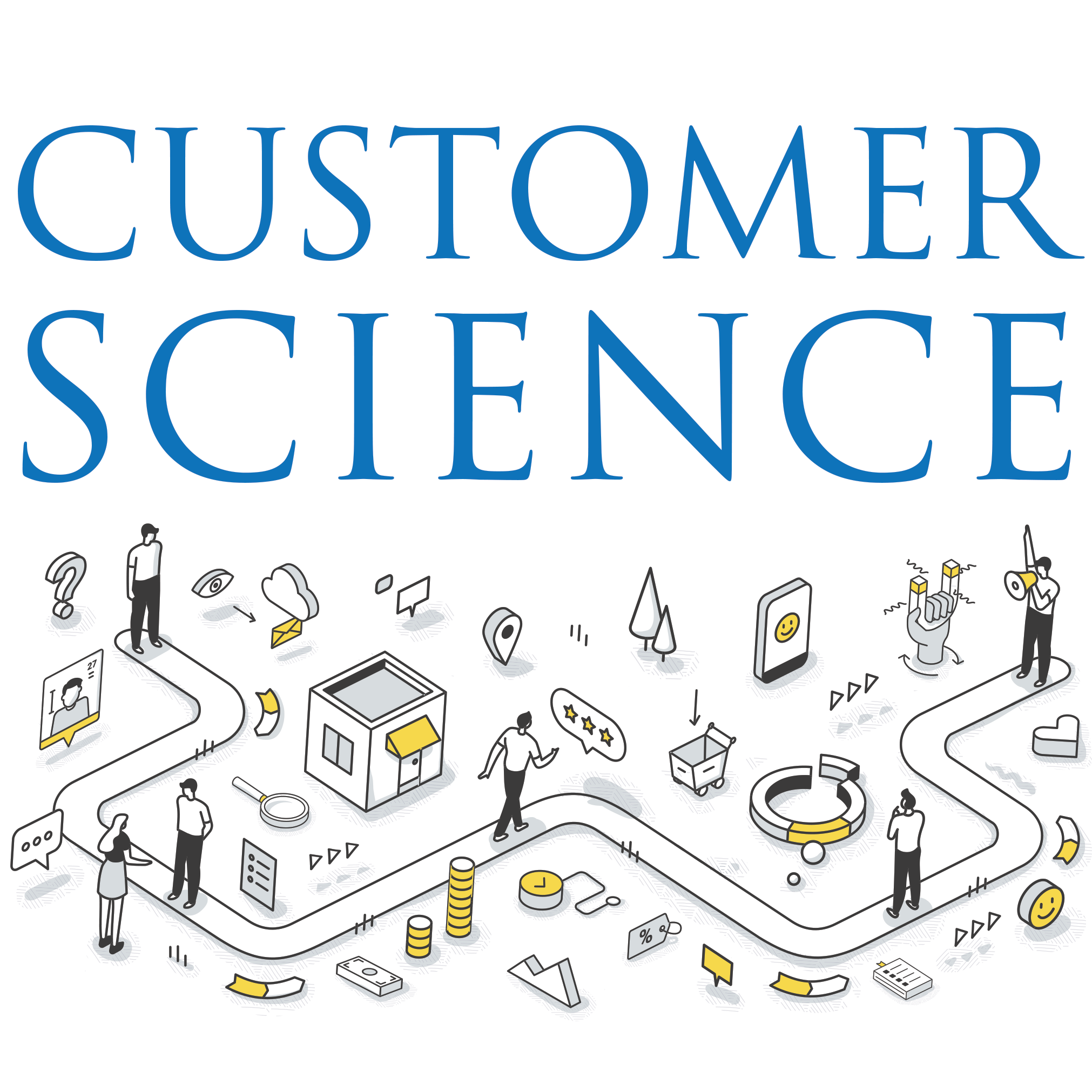
Customer Science
This podcast is based on The Customer Science Handbook by Alexander Chernev, professor of marketing at the Kellogg School of Management at Northwestern University. Drawing on decades of research in psychology, behavioral economics, and marketing, it examines the forces that shape customer behavior and offers a systematic approach to creating transformative customer experiences.
- Update frequency
- every day
- Average duration
- 22 minutes
- Episodes
- 46
- Years Active
- 2025

Choice Overload and Decision Fatigue
This episode discusses how having too many options can lead to choice overload, reducing decision satisfaction and purchase likelihood. It explores strategies for simplifying choices, such as limitin…

Defining the Business Problem and Formulating the Research Question
Framing the right business problem is a critical first step in any successful research effort. This episode discusses how to translate vague business challenges into clear, researchable questions tha…

The Principle of Reference-Point Dependence
This episode unpacks the concept of reference-point dependence, illustrating how people assess value based on comparisons to a known benchmark rather than absolute performance. Examples from Olympic …

The Principle of Diminishing Marginal Value
This episode examines the diminishing marginal value principle, which explains why improvements in a product’s performance have decreasing impact as performance levels rise. It illustrates how compan…

The Invisible Influence of Choice Context
This episode examines how seemingly irrelevant factors in the choice environment—like framing, order, and comparisons—influence what people choose. It delves into context effects such as the compromi…

The Power of Defaults
This episode explores how default options powerfully shape decisions by reducing effort, leveraging loss aversion, and signaling social norms or implicit endorsements. It distinguishes between hard a…

Cognitive Barriers to Action
Cognitive barriers such as performance, preference, and choice uncertainty can undermine customers’ confidence and prevent purchases. The episode outlines how difficulty in assessing benefits, ill-de…

Emotional Loyalty
Focusing on emotional loyalty, this episode explains how customers’ feelings—especially enjoyment and emotional reinforcement—can drive lasting brand connections. It showcases the success of campaign…

Thinking in Categories
People often evaluate products qualitatively by sorting them into categories, leading to mental shortcuts and biases such as stereotyping and unit bias. The episode explores how categorization influe…

Drawing Inferences
When information is incomplete, consumers make inferences based on visible cues using halo effects or compensatory logic. This episode explains how price, shape, or brand reputation can lead to assum…

Thinking and Deciding
This episode introduces the two main systems of thinking—automatic (System 1) and deliberate (System 2)—and how they shape our decisions. It explores how intuition often drives everyday choices, whil…

Choice Based on Reasons
This episode explores how people often make choices not just based on preferences but also to justify those choices with reasons. It illustrates how providing reasons can change what people choose, e…

Implementational Barriers to Action
Implementational barriers arise when customers struggle to turn their decisions into action due to unclear steps or high perceived effort. The episode covers two key obstacles—implementation uncertai…

Managing Consumption
Consumption experiences don’t just happen—they can be designed, managed, and enhanced. This episode explores how structuring consumption, such as pacing and sequencing experiences, can boost customer…

Creating Memories
Memories of experiences—not just the experiences themselves—play a critical role in shaping future customer decisions. This episode introduces the “peak–end rule,” emphasizing how the most intense an…

Emotional Triggers
This episode explores how brands use emotional triggers to tap into consumers' desire for pleasure, excitement, and security—or to provoke fear and anxiety to drive action. Positive triggers such as …

Managing Customer Involvement
The episode outlines the “involvement gap” between highly engaged managers and largely indifferent consumers, who make most decisions using quick, intuitive thinking. It emphasizes the importance of …

Focus, Primacy, and Fluency
This episode examines how what we focus on shapes our perceptions of importance, attractiveness, and truth. It covers the focusing illusion, primacy effects, and processing fluency, showing how even …

The Power of Associations
This episode dives into how mental associations shape beliefs and influence decision-making via two primary routes: central (analytical) and peripheral (automatic). It explains how marketers can crea…

Triggers as Action Drivers
This episode examines how triggers—both internal and external—activate dormant customer needs and drive action. It distinguishes between physiological and psychological triggers, as well as situation…